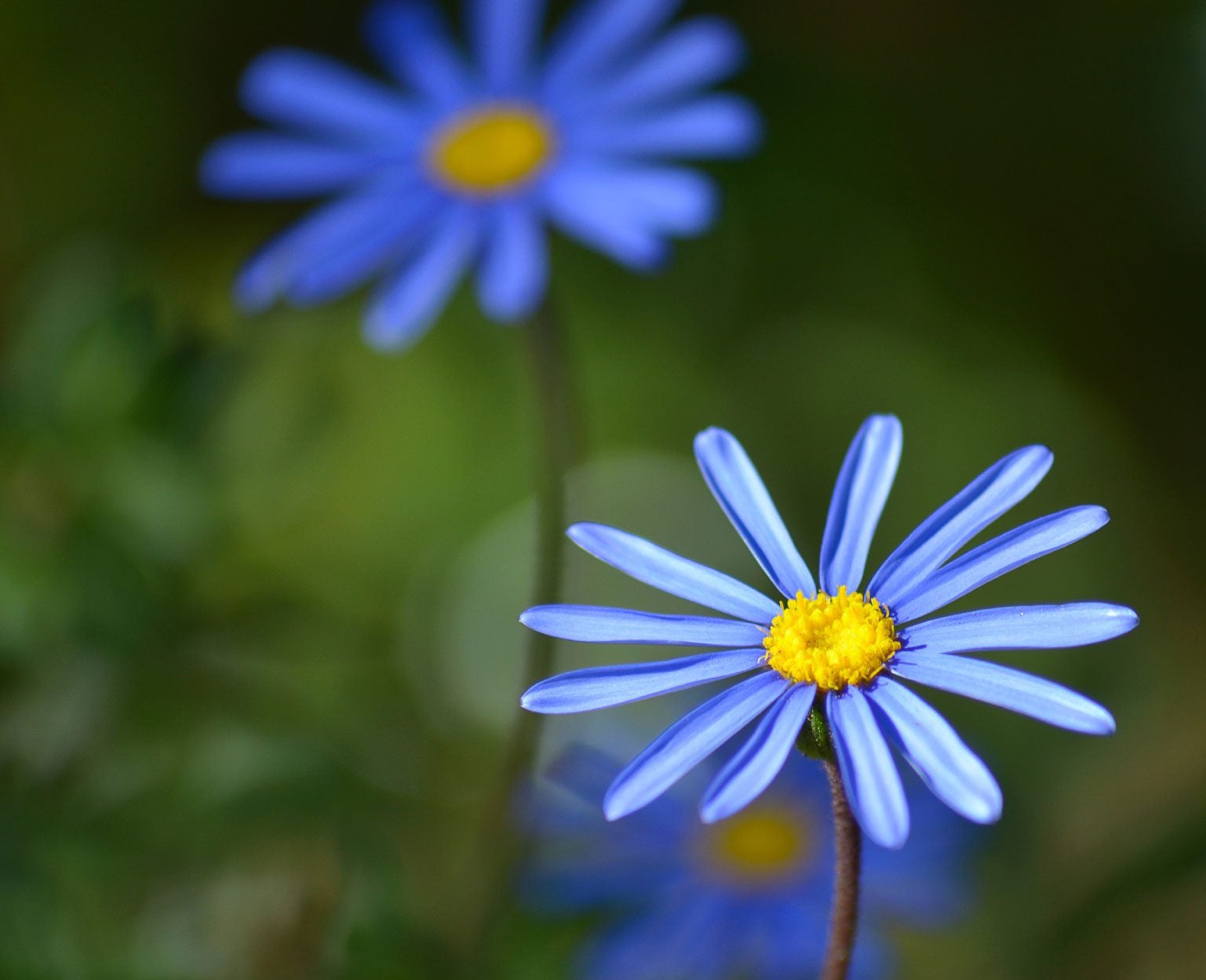Blue Daisy Plant Care: Tips For Growing Felicia Daisy Plants


Felicia daisy (Felicia amelloides) is a bushy, South African native valued for its bright masses of miniature blooms. Felicia daisy flowers consist of showy, sky-blue petals and bright yellow centers. Butterflies are attracted to the vivid blue blooms. This hardy plant revels in hot, dry climates and doesn't perform well in wet soil or humidity.
Blue Daisy Information
Felicia daisy is often known as blue daisy or blue kingfisher daisy. Mature height of the plant is about 18 inches (46 cm.), spreading out 4 to 5 feet (1-1.5 m.) in width. The plant is grown as an annual in most climates. However, it is perennial in USDA zones 9 and 10. Where summers are cool, Felicia daisy often blooms from late spring until autumn. In hot climates, the plant usually stops blooming when temperatures rise in midsummer. Felicia daisy can be slightly aggressive and may crowd out weaker or more delicate plants.
Growing Felicia Daisy Plants
Felicia daisy prefers full sunlight, but afternoon shade is beneficial in hot, sunny climates. The plant isn't fussy and grows in nearly any well-drained soil. The easiest way to start Felicia daisy is to purchase spring bedding plants, which may be available in garden centers and nurseries. Otherwise, plant seeds indoors in cell packs or peat pots six to eight weeks before the last expected frost. If you live where summers are cool, plant seeds directly outdoors soon after the last frost. Thin the seedlings to a distance of 10 to 12 inches (25-31 cm.) when the blue daisies are 3 to 4 inches (8-10 cm.) tall. This is also the best time to pinch the top inch (2.5 cm.) from shoot tips, which promotes bushy, fuller growth.
Blue Daisy Plant Care
Although Felicia has a somewhat fragile appearance, this durable, pest-resistant plant requires very little maintenance. Provide water to keep the soil lightly moist, but never soggy, until the roots are established. Once the plant is established and shows healthy new growth, an occasional watering is sufficient. Water deeply to saturate the roots, then let the soil dry before watering again. Deadhead the blooms as soon as they fade to prevent the plant from going to seed and to encourage continual blooms as long as possible. Prune the plant lightly when it begins to look tired in midsummer, then cut it down hard in late summer for a flush of new growth.
Sign up for the Gardening Know How newsletter today and receive a free copy of our e-book "How to Grow Delicious Tomatoes".

A Credentialed Garden Writer, Mary H. Dyer was with Gardening Know How in the very beginning, publishing articles as early as 2007.